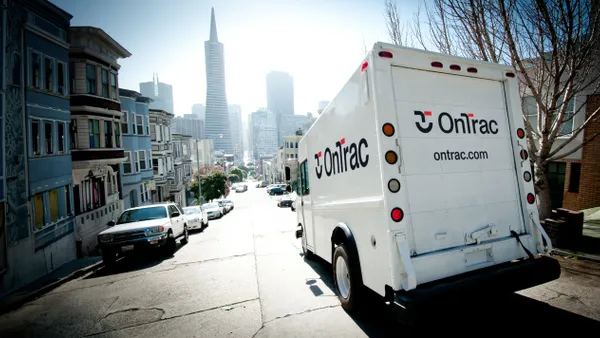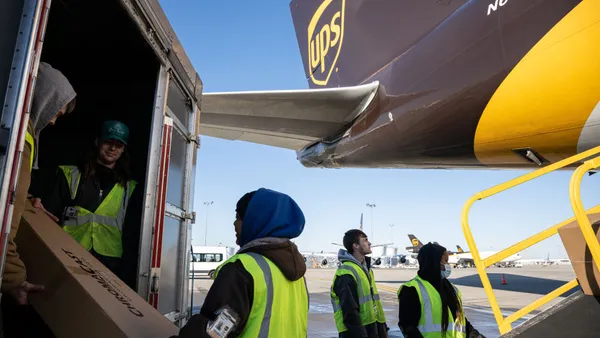Dive Brief:
- New York City's Department of Transportation has proposed to authorize the use of larger pedal-assist cargo bikes in the city, which it says will make last mile deliveries safer and more sustainable by reducing truck activity.
- The proposed rule would allow them to be up to 48 inches wide with up to four wheels, making them easier to pedal while carrying heavy loads. Current rules restrict cargo bikes’ width to 36 inches and no fourth wheel.
- A 30-day public comment period on the proposal began Aug. 14, according to a news release. The city’s DOT will hold a virtual public hearing on the measure Sept. 13.
Dive Insight:
The New York City Department of Transportation has encouraged cargo bike operations in the city for years as it works to cull truck traffic and emissions. It launched a commercial cargo bike pilot program in 2019 with carriers including UPS, FedEx, Amazon and DHL.
Those enrolled in the pilot can load and unload wherever commercial vehicles can, as well as in designated corrals, according to a department presentation. Since its launch, cargo bike deliveries have increased.
"In 2022, cargo bikes made more than 130,000 trips delivering over 5 million packages, resulting in the reduction of over 650,000 metric tons of CO2 emissions, and demonstrating their effectiveness as a last-mile delivery mode," the news release said.
If implemented, the proposed rule on larger cargo bikes would further expand the city's low or no-emission options for package and grocery deliveries. The New York City DOT said in April that close to 90% of goods in the city are moved via truck.
"Just two cargo bikes can replace one box truck, increasing safety and reducing CO2 emission by 14 tons per year — equivalent to 30,872 passenger car miles traveled," New York City DOT Commissioner Ydanis Rodriguez said in a statement.
In Europe, 48-inch-wide cargo bikes are commonly used by carriers, said Corey Hannigan, active transportation program manager at the Tri-State Transportation Campaign, in a statement.
An increase in New York City's allowable width "could allow more manufacturers and carriers to enter the market, bringing down costs," according to Hannigan.
To accommodate wider cargo bikes, the city should accelerate the planning and construction of wider protected bike lanes, Hannigan added.












